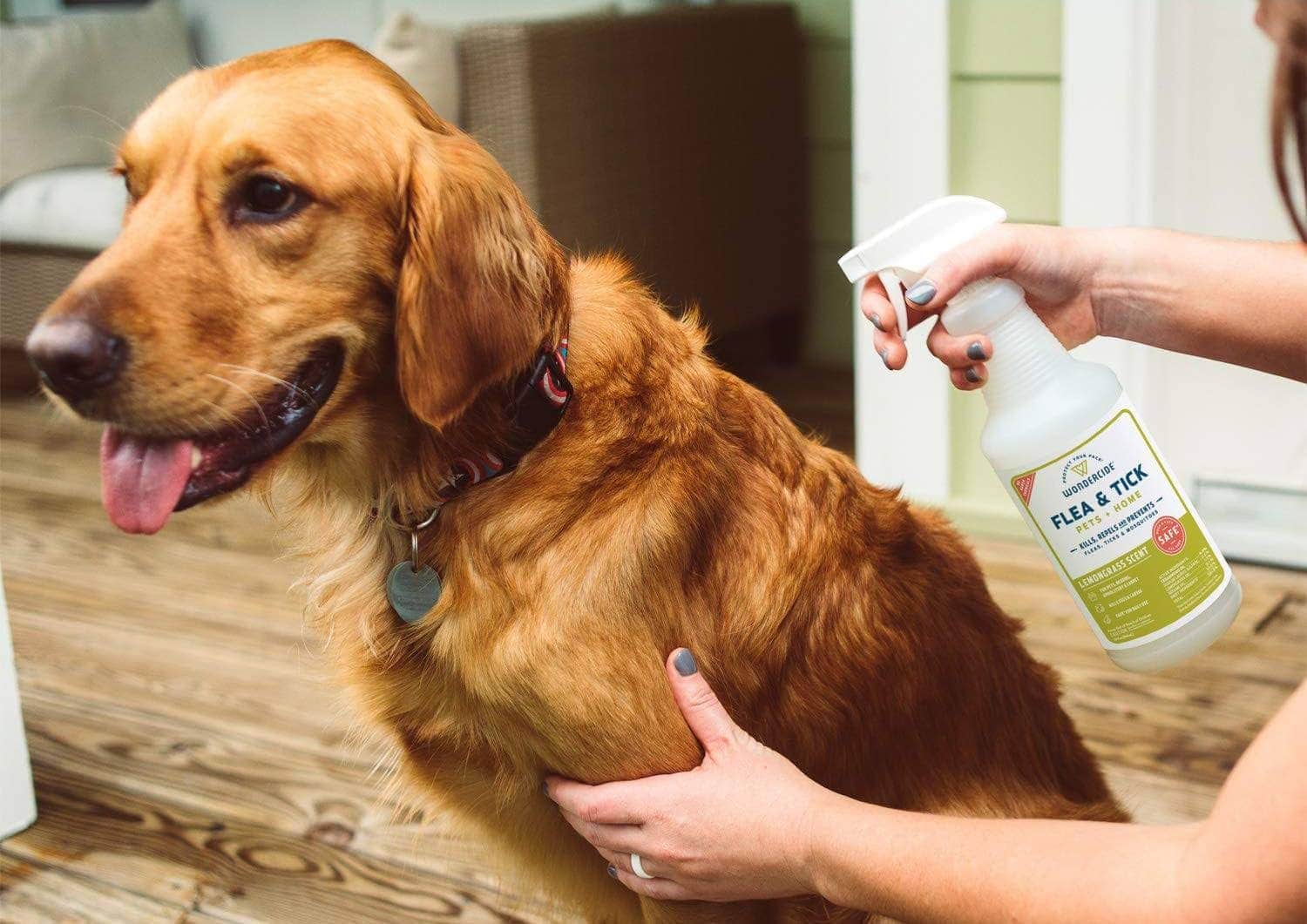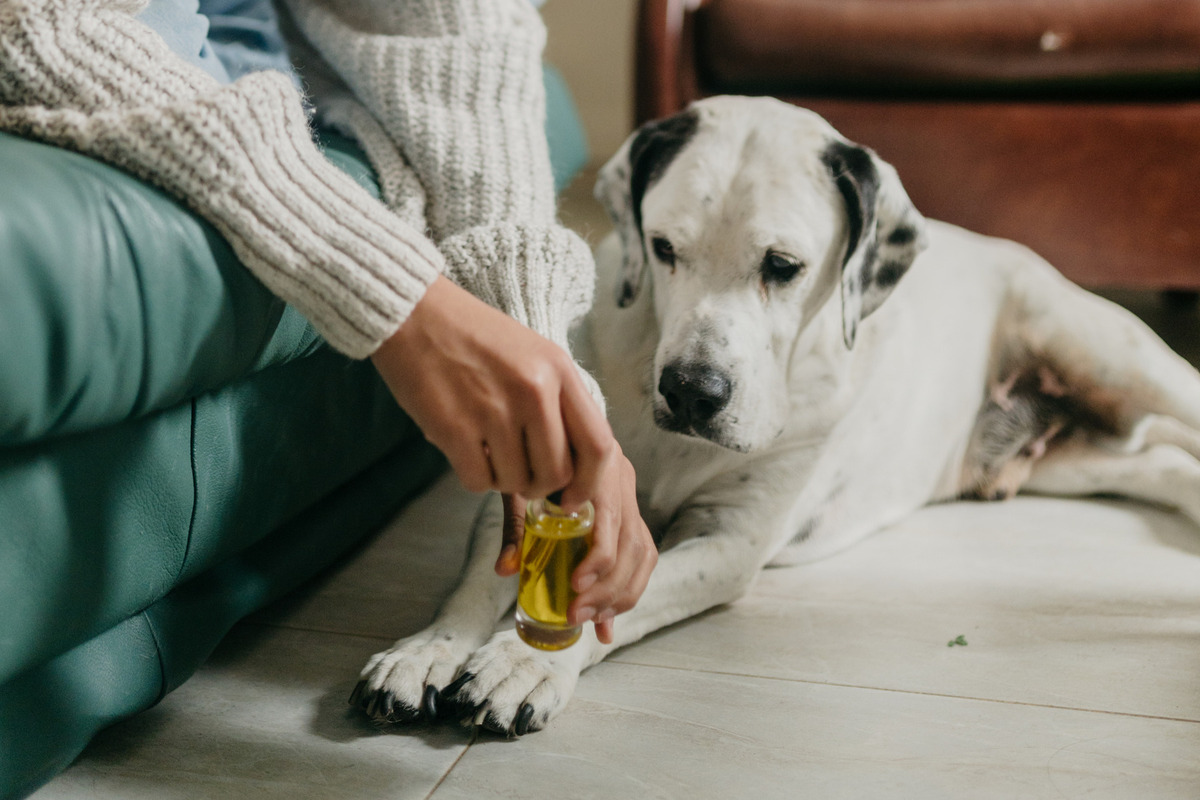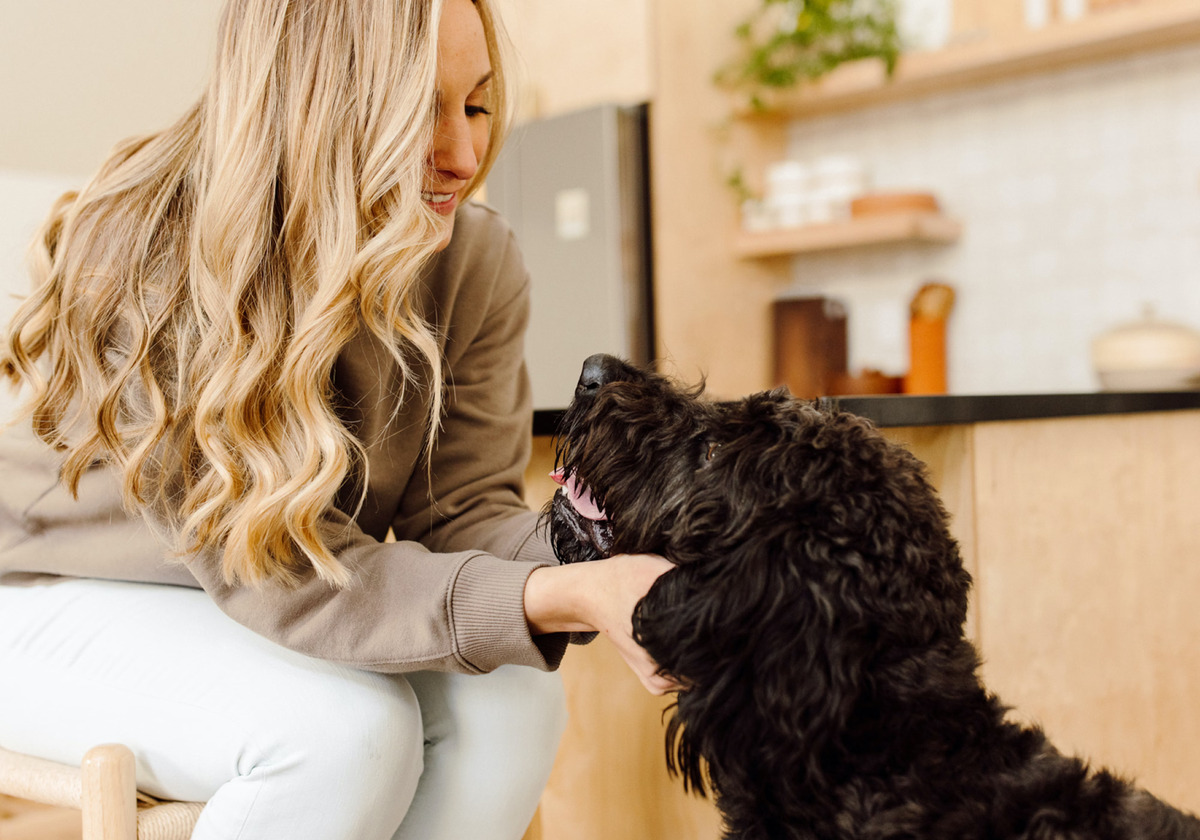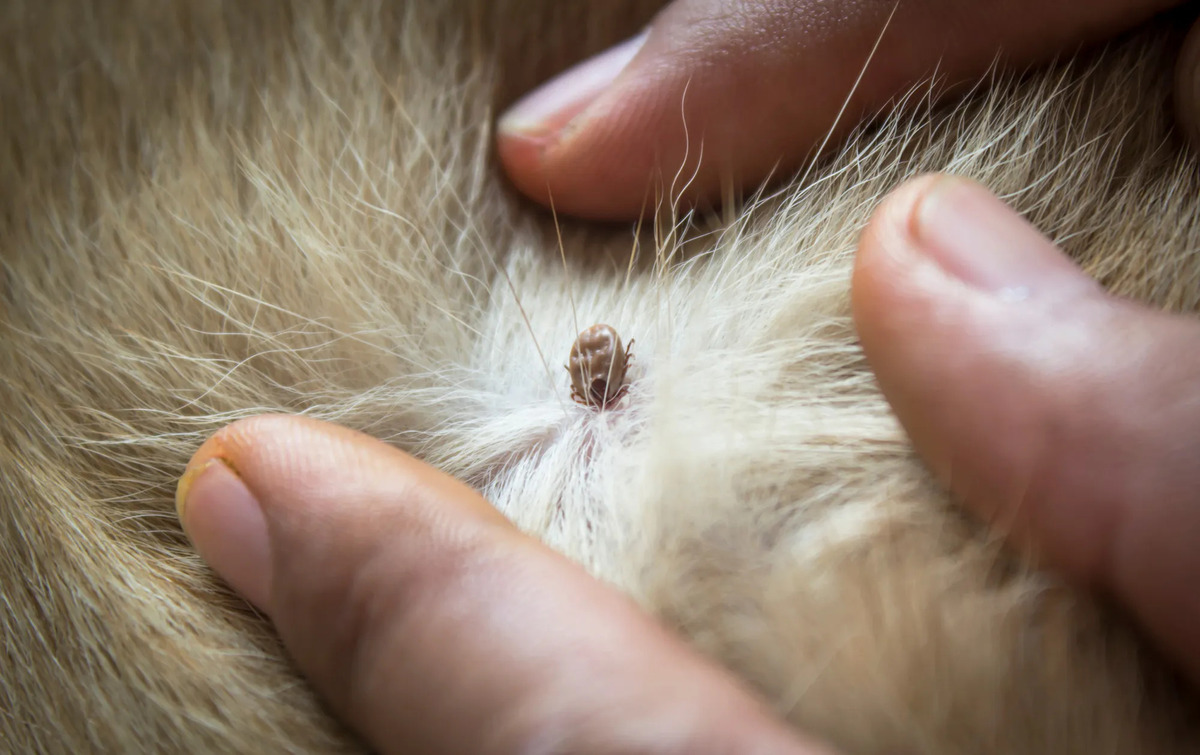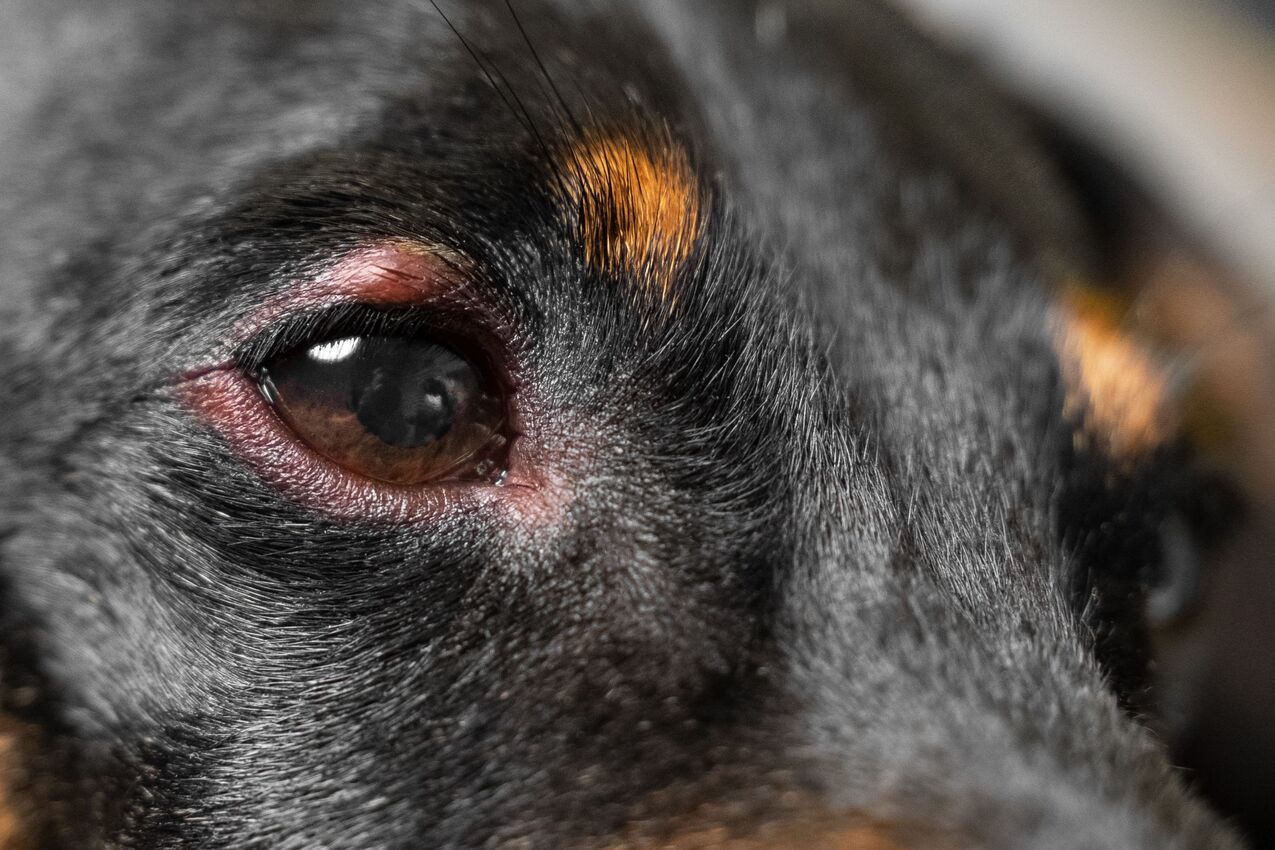Home>Health & Wellness>Common Health Issues>What Can Dog Fleas Do To Humans


Common Health Issues
What Can Dog Fleas Do To Humans
Modified: February 21, 2024
Learn about the common health issues caused by dog fleas and how they can affect humans. Protect yourself from potential health risks.
(Many of the links in this article redirect to a specific reviewed product. Your purchase of these products through affiliate links helps to generate commission for Pawsomeoldies.com, at no extra cost. Learn more)
Table of Contents
Introduction
Dog fleas are a common nuisance for our furry friends, but what many people don't realize is that these tiny pests can also pose a threat to humans. As a pet owner or someone who frequently interacts with dogs, it's essential to understand the potential risks associated with dog fleas and how they can impact human health. In this article, we will delve into the world of dog fleas, exploring their potential harm to humans and providing valuable insights into safeguarding against these pesky parasites.
Understanding the behavior and impact of dog fleas is crucial for anyone who shares their living space with dogs. By gaining a deeper understanding of these tiny yet troublesome creatures, individuals can take proactive measures to protect themselves and their loved ones from the potential health risks associated with dog fleas. Let's embark on a journey to uncover the hidden dangers of dog fleas and discover effective strategies for mitigating their impact on human health.
Understanding Dog Fleas
Dog fleas, scientifically known as Ctenocephalides canis, are small, wingless insects that thrive on the blood of their hosts. These pesky parasites are a common nuisance for dogs and can also infest other animals, including cats and even humans. Dog fleas are reddish-brown in color and have flattened bodies, allowing them to move swiftly through the fur of their hosts. They possess powerful hind legs, enabling them to jump impressive distances, making it easy for them to move between hosts.
The life cycle of a dog flea consists of four stages: egg, larva, pupa, and adult. Female fleas lay their eggs on the host, but the eggs eventually fall off into the surrounding environment, such as carpets, bedding, and upholstery. In favorable conditions, these eggs hatch into larvae, which then spin cocoons and transform into pupae. After a period of time, adult fleas emerge from the pupal casings and seek out a host to feed on.
Dog fleas are voracious blood feeders, and their bites can cause irritation and discomfort for their hosts. In addition to the physical discomfort, dogs infested with fleas may exhibit symptoms such as excessive scratching, hair loss, and skin irritation. These pests can also transmit diseases and parasites, posing a significant threat to the health and well-being of their hosts.
Understanding the behavior and life cycle of dog fleas is essential for pet owners and individuals who come into contact with dogs. By recognizing the characteristics and habits of these tiny parasites, individuals can take proactive measures to prevent infestations and protect themselves and their pets from the potential harm caused by dog fleas.
Can Dog Fleas Harm Humans?
Dog fleas are primarily known for infesting dogs and causing discomfort and health issues for our canine companions. However, many people are unaware that these pesky parasites can also pose a threat to human health. While dog fleas have a preference for feeding on the blood of dogs, they are opportunistic feeders and will not hesitate to bite humans when given the chance.
When dog fleas bite humans, they can cause a range of issues, including skin irritation, itching, and allergic reactions. The saliva of dog fleas contains proteins that can trigger allergic responses in some individuals, leading to redness, swelling, and discomfort at the bite site. Furthermore, constant scratching of flea bites can break the skin, increasing the risk of secondary bacterial infections.
In addition to the physical discomfort caused by flea bites, dog fleas can also transmit diseases to humans. While it is less common for dog fleas to directly transmit diseases to humans, they can serve as intermediate hosts for certain parasites and pathogens. For example, dog fleas can carry tapeworm eggs, and if accidentally ingested by humans, these eggs can develop into adult tapeworms in the intestines, leading to digestive issues and discomfort.
Moreover, the presence of dog fleas in the household can contribute to a stressful and unhygienic living environment. Dealing with a flea infestation can be emotionally taxing, and the constant battle to eradicate these pests can take a toll on mental well-being.
It's important to recognize that while the direct harm caused by dog fleas to humans may not be as severe as that experienced by dogs, the potential health risks should not be underestimated. By understanding the impact of dog fleas on human health, individuals can take proactive measures to prevent flea infestations and protect themselves and their families from the potential harm posed by these tiny yet troublesome parasites.
Health Risks Associated with Dog Fleas
Dog fleas pose several health risks to both humans and their furry companions. Understanding these risks is crucial for taking proactive measures to mitigate the potential harm caused by these pesky parasites.
-
Skin Irritation and Allergic Reactions: When dog fleas bite humans, they inject saliva containing proteins that can trigger allergic reactions. This can lead to redness, swelling, and intense itching at the bite site. For individuals with sensitive skin or existing allergies, flea bites can cause significant discomfort and may require medical attention to alleviate the symptoms.
-
Secondary Infections: Constant scratching of flea bites can break the skin, increasing the risk of secondary bacterial infections. The open wounds provide an entry point for bacteria, leading to localized infections that require treatment with antibiotics. Preventing flea bites through effective flea control measures is essential to reduce the risk of secondary infections.
-
Transmission of Diseases: While direct transmission of diseases from dog fleas to humans is less common, these pests can serve as intermediate hosts for certain parasites and pathogens. Dog fleas can carry tapeworm eggs, and if accidentally ingested by humans, these eggs can develop into adult tapeworms in the intestines, leading to digestive issues and discomfort. Additionally, the presence of dog fleas in the household can contribute to a stressful and unhygienic living environment, impacting overall well-being.
-
Emotional Stress: Dealing with a flea infestation can be emotionally taxing for both pet owners and their pets. The constant battle to eradicate fleas from the home, coupled with the distress of seeing pets suffer from flea bites and discomfort, can lead to heightened stress and anxiety. Maintaining a flea-free environment is essential for promoting a harmonious and stress-free living space for both humans and their beloved pets.
By recognizing the potential health risks associated with dog fleas, individuals can take proactive steps to protect themselves and their pets. Implementing effective flea control measures, such as regular pet grooming, use of flea prevention products, and maintaining a clean living environment, can significantly reduce the risk of flea infestations and mitigate the potential health hazards posed by these tiny yet troublesome parasites.
How to Protect Yourself from Dog Fleas
Protecting yourself from dog fleas is essential, especially if you share your living space with dogs or frequently interact with them. By implementing proactive measures, you can significantly reduce the risk of flea infestations and minimize the potential harm caused by these pesky parasites. Here are some effective strategies for safeguarding yourself from dog fleas:
-
Pet Grooming: Regular grooming and bathing of your pets are crucial for flea prevention. Use a vet-recommended flea shampoo and grooming tools to keep your pets' fur clean and free from fleas. By maintaining good pet hygiene, you can minimize the risk of flea infestations in your home.
-
Flea Prevention Products: Utilize flea prevention products such as spot-on treatments, oral medications, and flea collars recommended by your veterinarian. These products are designed to repel and kill fleas, providing long-lasting protection for your pets. By using these preventive measures, you can create a hostile environment for fleas and reduce the likelihood of infestations.
-
Environmental Control: Keep your living environment clean and well-maintained to deter fleas from thriving. Regularly vacuum carpets, upholstery, and pet bedding to remove flea eggs, larvae, and pupae. Wash pet bedding and linens in hot water to eliminate any flea eggs or larvae present. Additionally, consider using flea control products designed for indoor use to target fleas at all life stages.
-
Yard Maintenance: If you have a yard or outdoor space where your pets spend time, it's important to maintain the area to minimize flea habitats. Keep the grass trimmed, remove excess foliage, and consider using pet-safe outdoor flea control products to prevent fleas from infesting outdoor areas.
-
Professional Pest Control: In severe cases of flea infestations, consider seeking professional pest control services to effectively eliminate fleas from your home. Pest control experts can provide targeted treatments to eradicate fleas and prevent future infestations, ensuring a flea-free living environment for you and your pets.
-
Regular Veterinary Check-ups: Schedule regular veterinary check-ups for your pets to monitor their health and address any flea-related concerns. Veterinarians can recommend specific flea control measures tailored to your pets' needs and provide guidance on maintaining a flea-free environment.
By incorporating these proactive measures into your routine, you can create a protective barrier against dog fleas and minimize the potential health risks associated with flea infestations. Prioritizing flea prevention and maintaining a clean and hygienic living environment are essential steps in safeguarding yourself and your pets from the impact of dog fleas.
Conclusion
In conclusion, dog fleas are not only a nuisance for our beloved pets but also pose potential health risks to humans. Understanding the behavior and impact of dog fleas is crucial for pet owners and individuals who share their living space with dogs. The presence of dog fleas can lead to skin irritation, allergic reactions, and the transmission of diseases, highlighting the importance of proactive flea prevention and control measures.
By recognizing the potential harm caused by dog fleas and implementing effective strategies for protection, individuals can create a safe and harmonious living environment for themselves and their pets. Regular pet grooming, use of vet-recommended flea prevention products, and environmental maintenance are key components of a comprehensive flea control plan.
It is essential to prioritize flea prevention and maintain a clean living environment to minimize the risk of flea infestations and mitigate the potential health hazards posed by these tiny yet troublesome parasites. By taking proactive steps to safeguard against dog fleas, individuals can enjoy a healthier and more comfortable living space, free from the impact of these pesky pests.
In essence, staying informed about the risks associated with dog fleas and implementing preventive measures empowers individuals to protect themselves and their pets from the potential harm caused by these tiny yet troublesome parasites. By fostering a flea-free environment, pet owners and dog enthusiasts can ensure the well-being and comfort of their furry companions while promoting a healthier and happier living space for themselves.


